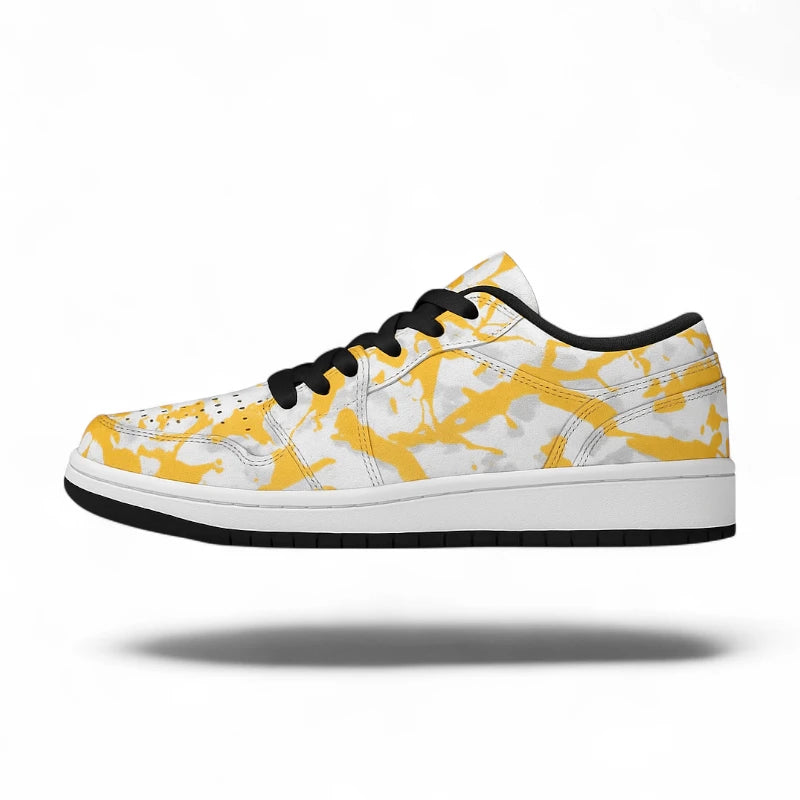Meta Description:
Learn 5 practical tips to design a custom shoe: define purpose, master color, pick materials, nail fit, and prototype fast—using tools at custom-shoe.com.
5 Tips to Design a Custom Shoe
Custom footwear is no longer a niche hobby; it’s a mainstream way to turn personal stories into wearable art.
Yet a blank 3-D sneaker template can feel intimidating if you’ve never moved beyond picking colors in a brand configurator.
The five tips below break the design process into clear, manageable steps—each backed by industry know-how and paired with resources on custom-shoe.com that make execution easy.
Tip 1 | Start With a Clear Purpose and Story
Every successful shoe begins with “why.” Are you solving a performance need—say, better arch support for long shifts—or telling a personal story, like colors from your hometown flag?
Write one sentence that captures the mission; pin it to your workspace. That statement keeps later choices—palette, materials, graphics—coherent rather than random.
Practical kickoff checklist
-
Audience – Yourself, a friend, or a store drop?
-
Use-case – Daily commute, court play, or weekend flex?
-
Inspiration – Photos, color swatches, or lyrics that set mood.
-
Timeline & budget – Decide up front; constraints spark creativity.
Once you’ve nailed the brief, pick the silhouette that fits the mission best:
-
Custom low-tops – everyday versatility.
-
Custom high-tops – ankle drama and extra panel space for art.
-
Custom boots – rugged builds for trail or street.
Tip 2 | Master Color Harmony Before You Click “Order”
Random hues can sink an otherwise sharp concept. Basic color theory says complementary pairs (opposites on the wheel) create the strongest contrast, while analogous tones (neighbors) feel calm. (Wikipedia) Use the 60-30-10 rule as a guardrail:
|
% of Shoe |
Palette Role |
Example |
|
60 % |
Dominant base |
Forest-green leather upper |
|
30 % |
Secondary shade |
Olive suede overlays |
|
10 % |
Accent pop |
Orange lace tips & logo stitch |
Test in three contexts
-
Natural light – Shoot a daylight render; colors shift outdoors.
-
Low light – Ensure accents don’t disappear under street lamps.
-
Motion – Spin the 3-D preview; seams or stitch lines may cut through color blocks.
Digital builders on custom-shoe.com let you swap swatches instantly, but always step back from the screen—eyes tire and misjudge saturation after a long session.
Tip 3 | Choose Materials for Performance, Sustainability, and Feel
A great palette still fails if the shoe wears hot or scuffs in a week. Think like a shoemaker: pick uppers, linings, and soles that serve the story and the wearer.
|
Upper Material |
Strengths |
Best Use |
|
Tumbled Leather |
Ages with rich patina |
Low-tops, luxury collabs |
|
Engineered Knit |
Breathes, forms to foot |
Runners, summer pairs |
|
Vegan Suede |
Eco-friendly texture |
Casual high-tops |
|
Reflective Vinyl |
Night visibility |
Bike commuters, rave shoes |
For longevity, consider classic shoemaking wisdom: stitched (Goodyear, Blake) or secure cup-sole constructions that allow resolving. The Wikipedia overview of shoemaking explains why stitch methods outlast glue-only builds. (Wikipedia)
Sustainability add-ons
-
Recycled foam midsoles
-
Cork or algae outsoles
-
Plant-dyed canvas panels
Highlight eco features in your product description; conscious buyers read the details.
Tip 4 | Nail Fit and Function Early
Design is equal parts looks and biomechanics. The most eye-catching gradient means little if the arch pinches or the heel slips.
Key fit checkpoints
-
Last shape – Use the sizing wizard inside every custom-shoe.com builder. Split-size options solve one foot larger than the other.
-
Arch support – Adjustable foam densities or removable orthotics add comfort without thick insoles.
-
Toe-box volume – Athletic users need wiggle room; fashion pairs can taper slightly.
-
Collar height & padding – High-tops need foam balance: too much induces heat, too little rubs skin.
Run a quick wear-test in similar store-bought shoes; note pressure points, then correct them in your design.
Tip 5 | Prototype, Test, and Iterate Faster With Digital Tools
Traditional footwear sampling could take months. Today, VR previews and on-demand micro-factories cut that cycle to weeks.
Five-day sprint roadmap
|
Day |
Action |
|
1 |
Upload mood board, lock palette, select materials |
|
2 |
Build first 3-D draft in low-tops or high-tops studio |
|
3 |
Share link with two friends or an online forum; collect feedback |
|
4 |
Adjust color balance, swap materials, tweak fit options |
|
5 |
Final render, confirm size & shipping, place the order |
External inspiration: Vogue Business reports that brands leveraging rapid prototyping cut sample waste by 30 % and speed launches by a full season. Adopting similar workflows—albeit at a personal scale—means you’ll own your dream pair before the trend cycle flips.
Maintenance Bonus: Keep Customs Looking Day-One Fresh
-
Water-proof suede and plant-dyed fabrics before first wear.
-
Wipe leather uppers after each outing—dust dulls color over time.
-
Brush knit uppers gently with a soft sneaker brush; avoid snagging loops.
-
Rotate pairs every 24 hours; midsoles rebound and colors rest.
Cared-for customs last twice as long, halving environmental footprint and doubling bragging rights.
